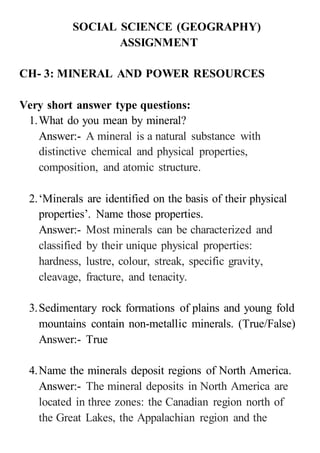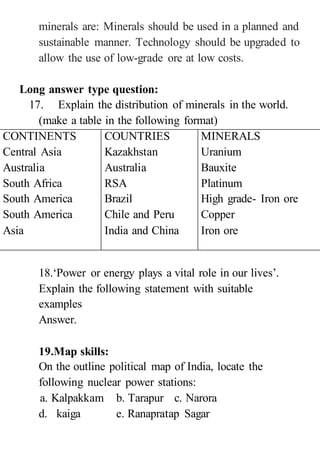This document contains an assignment on mineral and power resources from a social science geography class. It includes short answer and long answer questions testing knowledge of topics like the definition of a mineral, properties used to identify minerals, locations of mineral deposits worldwide, major mineral producers, and types of energy resources including fossil fuels, renewable resources, and their importance for development. It concludes with a long answer question explaining the global distribution of important minerals and map skills questions locating nuclear power plants in India.








